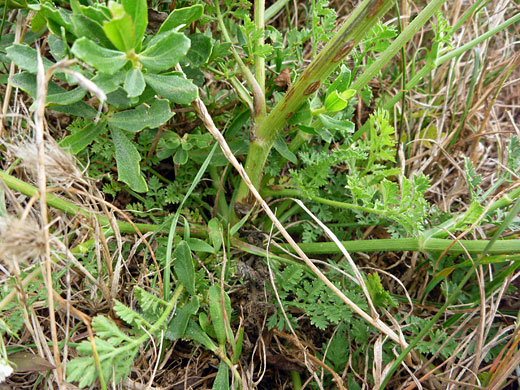Common names:
Queen anne's lace, wild carrot, bishop's lace
Family:
Scientific name:
Daucus carota
Main flower color:
Range:
Parts of all states; most common towards the west (non-native)
Height:
Up to 2 feet
Habitat:
Disturbed ground, fields, roadsides
Leaves:
Up to 5 inches long, stalked; divided three times into small, linear to lanceolate lobes
Season:
May to September
Daucus carota has spread across most parts of the US after being introduced from its native Europe and Asia. Although broadly similar to many other apiaceae species, it can be identified by such features as the finely dissected, carrot-like leaves (mostly basal), the bristly hairs on the stem and leaf stalks, and (most unusually) the small purple flower at the center of its branched umbel, of otherwise pure white flowers. Not all specimens produce this central flower, however. Leaves are tripinnate; divided into tiny leaflets.
The thick, grooved stem branches a few times; each branch is topped by the compound umbel characteristic of the apiaceae family. This has thin, lobed bracts at the base, and similar, but smaller bractlets below the individual clusters, The overall shape of the inflorescence is flat-topped, up to six inches in diameter. Often the outermost flowers have enlarged petals, and bilateral symmetry.
The thick, grooved stem branches a few times; each branch is topped by the compound umbel characteristic of the apiaceae family. This has thin, lobed bracts at the base, and similar, but smaller bractlets below the individual clusters, The overall shape of the inflorescence is flat-topped, up to six inches in diameter. Often the outermost flowers have enlarged petals, and bilateral symmetry.
All Contents © Copyright The American Southwest | Comments and Questions | Contribute | Site Map



